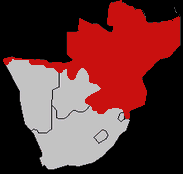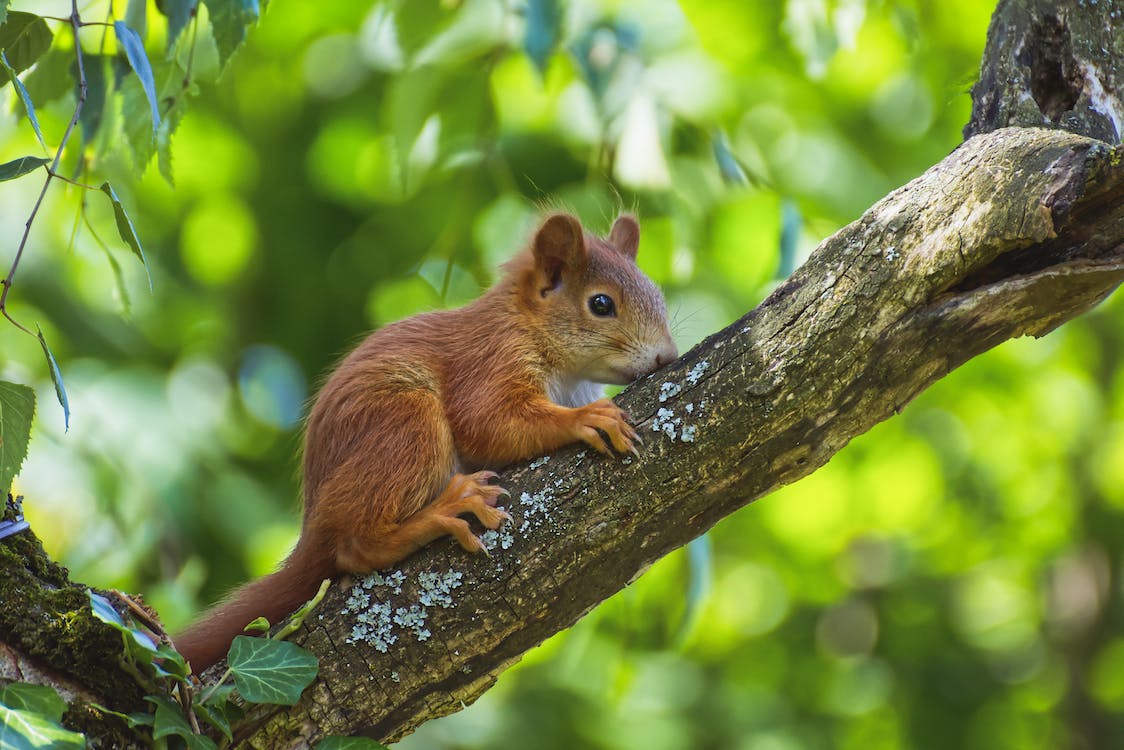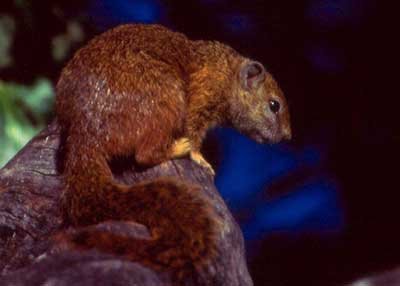SIZE: Length (including tail) 35 cm, mass 190 g.
COLOUR: Grizzled colouration varying from pale grey to yellow-grey and rusty grey; upper limbs sometimes more rusty than body. Underparts are white, off-white or buffy; eyes circled by white. Tail is flecked with black.
POTENTIAL LONGEVITY: 15 years
MOST LIKE: The Ground Squirrel, but is always found in association with savanna woodland and not with open, arid terrain. Lacks ground squirrel's white side stripe.
HABITAT: Savanna woodland, where the trunks and branches of trees offer plentiful holes for shelter.
In some areas they are solitary, or are found in small family groups: a lone tree squirrel relies on its wits when in danger and always keeps a branch or the trunk of a tree between it and the enemy. This species regularly forages on the ground, looking for roots, grasses, leafbuds, berries and insects such as ants. The squirrel is always alert, and when alarmed, it will run away with great speed, making for the nearest tree where it will lie motionless, flattened against a branch.
The young (usually 1 to 3) are born in a tree hollow lined with leaves and grass. The young remain until they are strong enough to brave the outside world, which is usually about three weeks. They are diligent in their grooming and a mother tree squirrel will hold her offspring down with her forelegs while grooming the little animal with licks, nibbles and the use of her claws. Food brought back to the nest is reserved for the parents only, and the young have to learn to find solid food for themselves from the time they are weaned.

WILDLIFE PARKS AND RESERVES WHERE THIS SPECIES IS FOUND:


